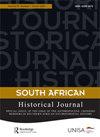修订民族志照片
IF 1
3区 历史学
Q1 HISTORY
引用次数: 0
摘要
本文试图通过对宝琳·英格尔(Pauline Ingle)摄影评估与实现(PIPER)项目中包含的一些照片的探索,来动摇民族志摄影流派。通过将这些收藏与当代重新塑造档案的尝试放在一起,本文探讨了摄影类型的可变性,以及她在农村地区摄影的方法和技术使民族志阅读复杂化的方式。本文章由计算机程序翻译,如有差异,请以英文原文为准。
Revisioning the Ethnographic Photograph
ABSTRACT This paper attempts to destabilise the ethnographic photographic genre through an exploration of some of the photographs contained in the Pauline Ingle Photographic Evaluation and Realisation (PIPER) project. By locating the collection alongside contemporary recuperative attempts to refigure the archive, the paper explores both the mutability of photographic genres and the ways in which the approaches and techniques of her photography in a rural area complicate an ethnographic reading.
求助全文
通过发布文献求助,成功后即可免费获取论文全文。
去求助
来源期刊

South African Historical Journal
Multiple-
CiteScore
0.70
自引率
0.00%
发文量
37
期刊介绍:
Over the past 40 years, the South African Historical Journal has become renowned and internationally regarded as a premier history journal published in South Africa, promoting significant historical scholarship on the country as well as the southern African region. The journal, which is linked to the Southern African Historical Society, has provided a high-quality medium for original thinking about South African history and has thus shaped - and continues to contribute towards defining - the historiography of the region.
 求助内容:
求助内容: 应助结果提醒方式:
应助结果提醒方式:


